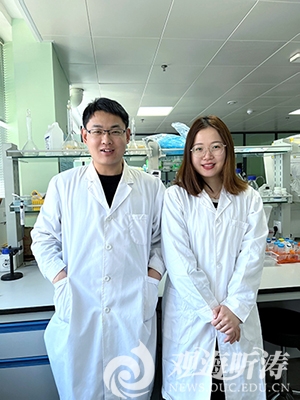Dr. Liu Weizhi’s team from OUC’s Key Laboratory of Marine Genetics and Breeding under the Ministry of Education and the Fang Zongxi Center for Marine Evo-Devo made new advancement in biomimetic materials based on scallop filament adhesion proteins for the repair of difficult-to-heal wounds. The research entitled “Extracellular Matrix-Mimetic Intrinsic Versatile Coating Derived from Marine Adhesive Protein Promotes Diabetic Wound Healing through Regulating the Microenvironment” was published in ACS Nano.

Diabetic foot ulcers (DFUs) represent one of the most serious complications of diabetes, with a high prevalence and disability rate as a typical hard-to-heal wound. Inspired by scallop adhesion, the team localized a foot filament protein consisting of the structural domain of epidermal growth factor, and induced its rapid assembly into an extracellular matrix-like coating material through Ca2+. With many excellent characteristics, the scallop foot filament protein coating demonstrated superior wound healing pro-healing ability to commercially available products in diabetic mice, diabetic rabbits, and in vitro cultured human skin models. The novel extracellular matrix-like coating opens up new avenues for clinical treatment of difficult-to-heal wounds.
The team has long been engaged in the research of functional biomaterials inspired by marine adhesion and has made a series of advances in the regulation of molecular assembly of protein-based materials and the development of biomedical materials in recent years. It carried out systematic research from three levels of elaborating the mechanism of material hierarchical assembling, regulating the physicochemical properties of the materials and optimizing their biofunctionality, and providing theoretical basis and technological support for the clinical transformation of new high-end biomedical materials.
